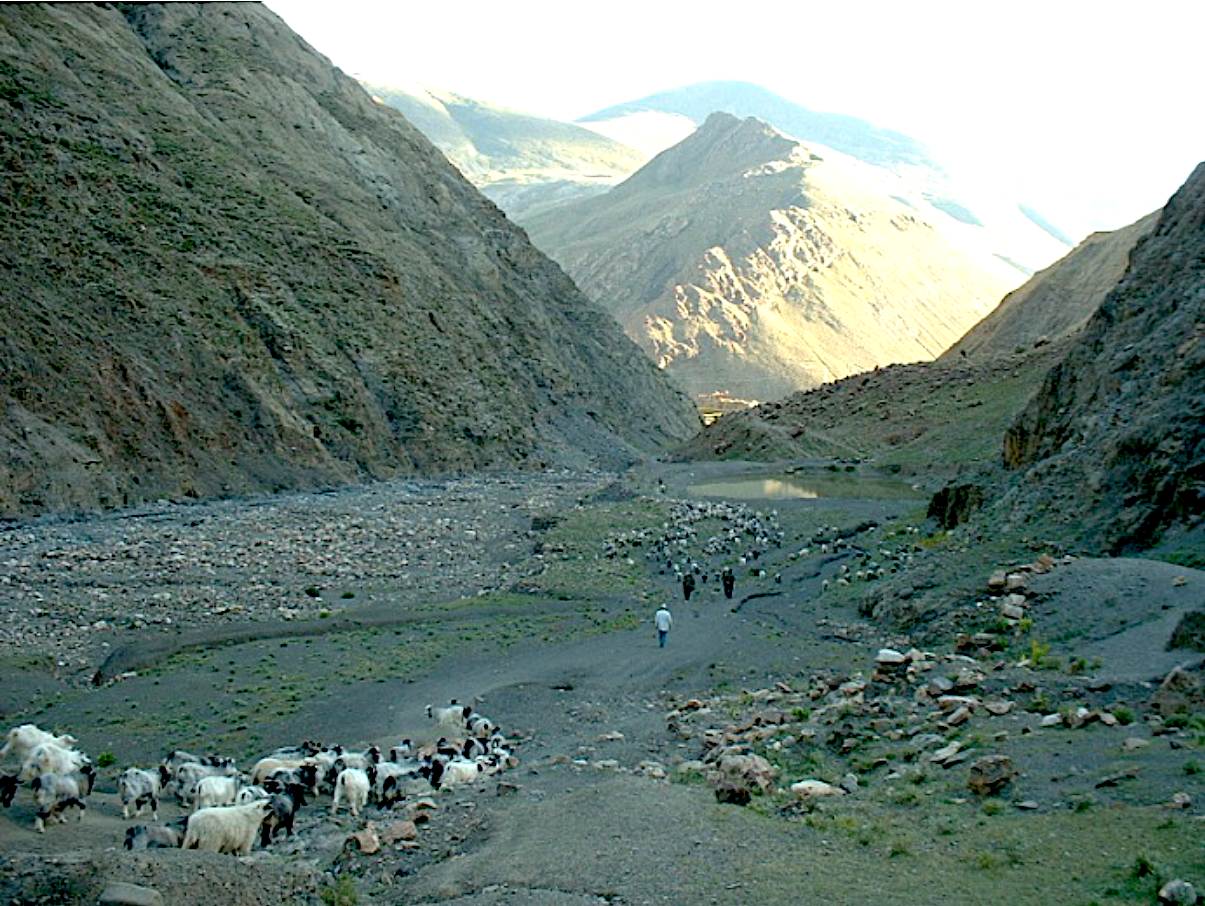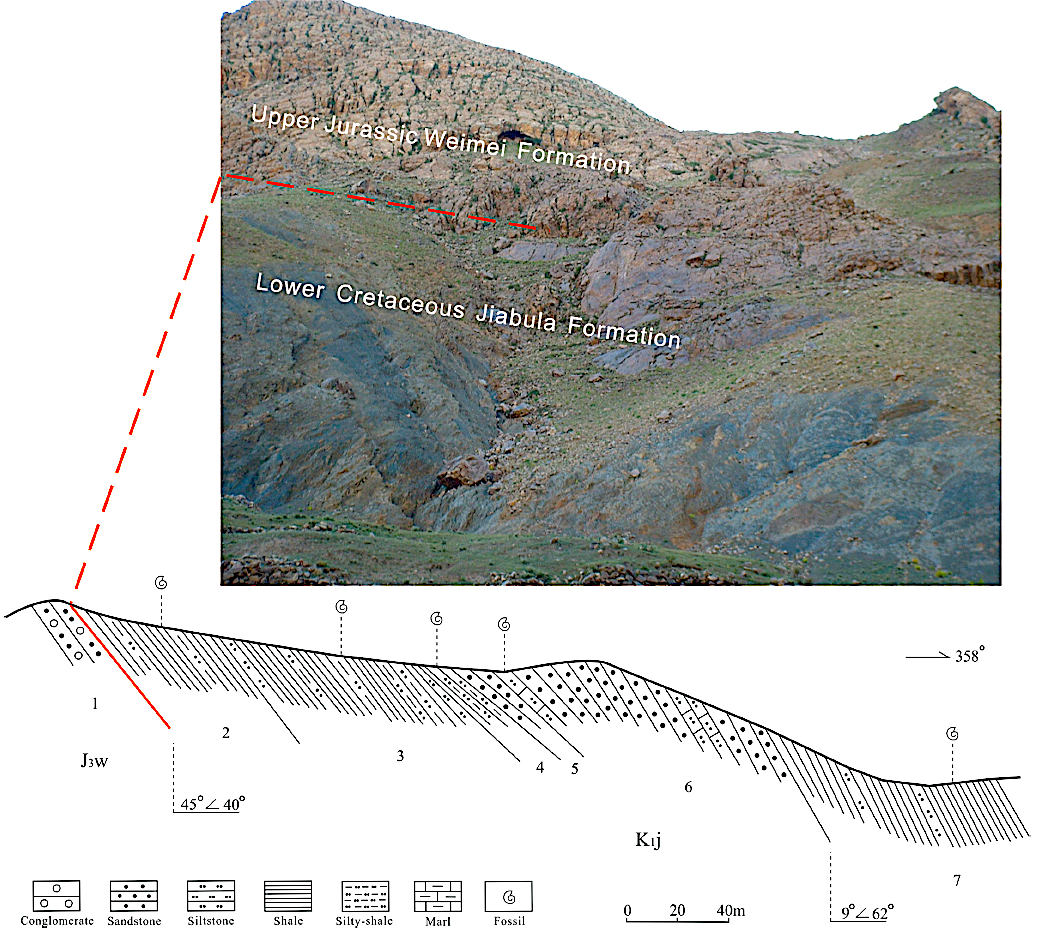Jiabula Fm
Type Locality and Naming
Himalayan North Belt. The Jiabula Formation was erected by the Coalfield Geological Team under the Xizang Bureau of Geology and Mineral Resources in 1957. Sun Yunzhu and Liu Guifang (1962) called it as the Jiabula Stage. Yangzuyi and Wu Shunbao named it formally as the Jiabula Formation. The formation was divided as lower and upper members by Wang Chengshan et al (2005). The section for the designation is at Jiabulabeigou of the Longma district, Gyangze County of Xizang (Tibet).
Synonym: Jiabula Gr
[Figure: Type section of Jiabula Formation in Jiabulabeigou of Gyangze County, southern Tibet]
Lithology and Thickness
The Jiabula Formation consists of a group of black shale with intercalations of sandstone and sandy limestone. Lower part contains a large amount of sandy, siliceous and calcareous nodules.
[Figure: Upper Jurassic- Lower Cretaceous boundary section in Jiabulabeigou of Gyangze southern Tibet -- Photo shows a down slope section]
Relationships and Distribution
Lower contact
Underlain by Sangxiu Fm (Dangpeng Xi, Xiaoqiao Wan et al. (2019, China Integrated Strat)
Upper contact
Overlain by Chuangde Fm (revised interpretation by Dangpeng Xi, Xiaoqiao Wan et al. (2019, China Integrated Strat)
Regional extent
The Jiabula Formation is widely distributed in the north sub-belt of Himalayan sedimentary region, well exposed in the Gyangze and Nagarze areas.
GeoJSON
Fossils
Ammonites were found from the lower part of Jiabula Formation in Gyangze, which have been recognized as Spiticeras-Berriasella and Himalayaites-Haplophylloceras assemblages in ascending order. A few fossils as Haplophylloceras sp. and Himalayites sp. have been found from the underlying Jurassic Weimei Fm. Some ammonite species of Spiticeras, Berriasella and Haplophylloceras, and rich bivalve Inoceramus fauna occur in the lower Sangxiu Fm in Nagarze. Calcareous nannofossils were recovered from the dark grey shale of the Jiabula Formation in Gyangze. They are mostly Watznaueria barnesae and W. fossacincta. Other rich species are Cyclagelosphaera margerelii, Biscutum constans and Manivitella pemmatoidea.
Age
Depositional setting
During the Jurassic and Cretaceous boundary time, a large regression happened in the Tibet-Tethys Sea, which is represented by the widespread sandstone sedimentation of uppermost Jurassic.
Additional Information

